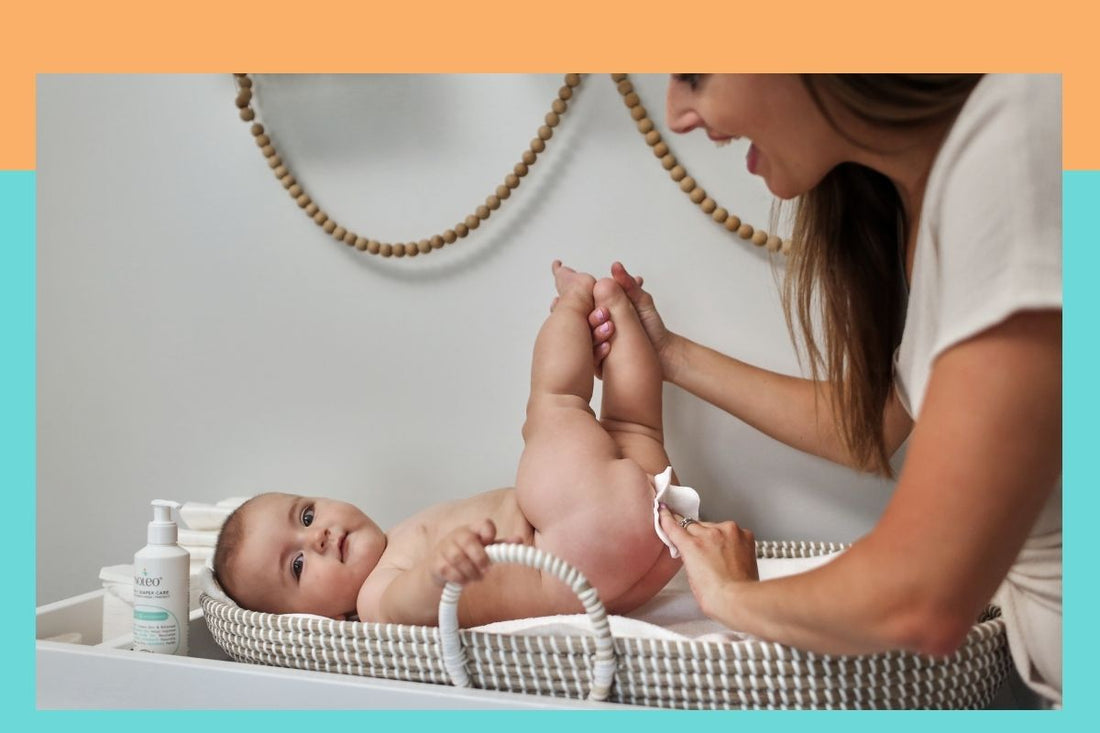
Our Top Tips for Diaper Rash
Share
Diaper rash happens. It’s one of the most common issues that affect a baby’s diaper area, but that’s not to say it can’t be prevented. Luckily, there are several best practices and tips that can help you keep your baby comfortable and free of diaper rash.
Stay on top of diaper changes
Diaper rash occurs due to the warm, moist environment in a baby’s diaper area. Allowing a baby to sit in a dirty diaper is the quickest way to have a case of diaper rash on your hands. With that being said, one of the best ways to prevent diaper rash and stop an existing case from getting worse is to keep the diaper area clean and dry. Make sure to change your baby’s diaper as soon as you notice that it is soiled. When changing your baby’s diaper, clean the surrounding area thoroughly and gently pat their skin dry. Using a gentle hand will prevent irritation and protect their delicate skin.
Keep it natural
When cleaning your baby’s diaper area and treating diaper rash, stay far away from products with fragrances, harsh chemicals, and any other ingredients that could irritate their sensitive skin. As much as possible, baby wipes, lotion, and diaper rash creams used should be formulated with natural, chemical-free ingredients. Consider swapping out harsh baby wipes for a gentler alternative like soft cotton pads. Instead of piling on the products, consider using one natural product that serves several purposes. For example, NOLEO 3-in-1 Diaper Rash Cream takes the place of wipes, lotions, and creams in one gentle product. It cleans and moisturizes the diaper area while preventing diaper rash and reducing redness, all thanks to 5 natural ingredients.
Avoid baby powder
Baby powder used to be the standard product for keeping the diaper area dry, but experts now advise parents to avoid it at all costs. Why? Well, babies can actually inhale the powdery substance into their lungs, which can wreak havoc on their little bodies. Using cornstarch as a baby powder substitute might seem like the more natural and better option for babies, but this too can harm their lungs when inhaled. Furthermore, cornstarch can exacerbate certain fungal diaper rashes. Overall, skip the powders when you’re seeking diaper rash prevention and treatment solutions. There are better, safer ways to keep a baby’s diaper area dry and clean.
Prevention is key
All in all, the best way to avoid a case of serious diaper rash is to prevent it from happening with smart diaper and skin care. Dress your baby in lightweight, breathable clothes to keep the area dry. Clothes that are too tight or made of non breathable materials can trap in hot, moist air and cause diaper rash to occur. If using cloth diapers, make sure they are completely clean and dry before putting them on your baby.
During changes, use a moisturizing product that will help protect your baby’s skin barrier. NOLEO 3-in-1 Diaper Rash Cream contains organic sunflower oil to help improve the skin barrier, while moisturizing organic olive oil helps protect delicate skin from irritation, dryness, and chafing. By keeping a protective layer on the skin, it can you help get ahead of any irritation by nourishing and protecting.
Keep your diaper changing station as germ-free as possible and wash your hands after changing to prevent bacteria from coming in contact with other surfaces or your baby’s skin. If you’re aware that your baby has sensitive skin, use extra caution and use natural products that suit their delicate skin. Wipe the area gently, as harsh rubbing and friction can cause a rash in of itself. Not sure what type of skin your baby has? Take our free skin quiz to find out!
For serious cases, see your child’s pediatrician
In many cases, diaper rash isn’t something to fret over. Regular instances of diaper rash can typically be taken care of by parents with the proper treatments, products, and prevention methods. However, parents should monitor every instance of diaper rash carefully. Instead of healing, diaper rash can sometimes become infected. Signs of a diaper rash infection include:
- Blisters in the affected area
- Swelling in the affected area
- Redness
- Fever
- Discharge or pus in the area
- A persistent or worsening rash, even after treatment
- Your child appears to be in pain because of their rash
If you notice any of these signs, immediately contact your child’s pediatrician to get them the proper help. The doctor may need to prescribe an antibiotic or antifungal cream in order to heal an infected case of diaper rash.
Sources:
